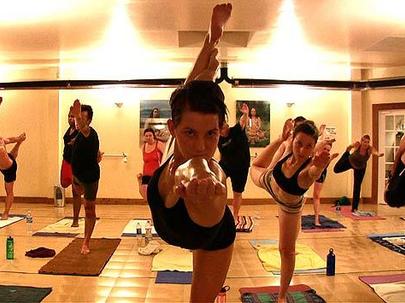Bikram Yoga Copyright Redux, Part 4
Part 4 of my series on the Bikram yoga copyright controversy breaks down Evolation’s answering brief. The appellees, winners on summary judgment regarding copyright invalidity of Bikram’s asana sequence, aim their brief squarely at the heart of the copyrightability issues surrounding Bikram’s sequence. Noticeably absent are any direct responses to the appellant’s opening brief arguments centered on the deference that should be given to opinions from administrative bodies such as the Copyright Office.
The appellees’ brief begins by drawing attention to the fact that the copyright at issue in the case relates to Bikram’s book which describes the sequence, not the sequence itself:
The Bikram Parties sued the Evolation Parties for infringing on the copyright that Bikram registered for the literary work, Bikram’s Beginning Yoga Class. That is the only work of authorship at issue.
The appellees argue that the sequence itself is an “idea” that happens to be expressed in the book and as such, cannot be protected under copyright law. Likewise, the brief repeatedly refers to the sequence as the “Bikram method” or the “Bikram system,” culminating in the argument that it falls under 17 U.S.C. §102(b) and is thus not copyrightable.
The appellees did respond directly to Bikram’s opening brief regarding the scope of protection afforded compilations under 17 U.S.C. §103. In his opening brief, Bikram argued that compilations, although not contained in the list of works of authorship protected by copyright under 17 U.S.C. §102(a), were in essence a new stand-alone category of works and therefore, because the sequence was purportedly “registered” via a supplementary registration to the book as a “compilation of exercises,” it was indeed a copyrightable work.
Evolation responds to this argument in its answering brief that:
…while a compilation amounting to a work of authorship may be protected by copyright if it falls within one of the eight categories of authorship listed in Section 102(a), a compilation is not protected by copyright per se, without regard to the criteria set forth in Section 102(a). Neither yoga postures nor compilations of yoga postures are among the categories of works of authorship protected by copyright under Section 102(a).
Rather than representing a separate and additional category of copyrightable works, the appellees point out that Section 103, as noted by the Supreme Court in Feist (499 U.S. at 359-360), was necessary to clarify Congress’ rejection of prior “sweat of the brow” decisions.
Regarding Bikram’s continued insistence that despite Copyright Office rejection the sequence is protectable as a choreographic work, the appellees point out that the Bikram sequence, unlike most works of choreography, is never accompanied by music. Evolation also exposed a flaw in Bikram’s argument that the sequence is a choreographic work due to the fact it is similar “to a composition and arrangement of dance movements and patterns.”
The “movements and patterns” of the sequence, as Bikram admitted, are driven by the verbal cues supplied by the dialogue that accompanies the performance of the sequence. Bikram analogized the dialogue to a musical accompaniment to a choreographic work, but as Evolation points out, absent the dialogue, nothing provides the sequence with pace, cadence, or rhythm, key elements to any choreographic work.

